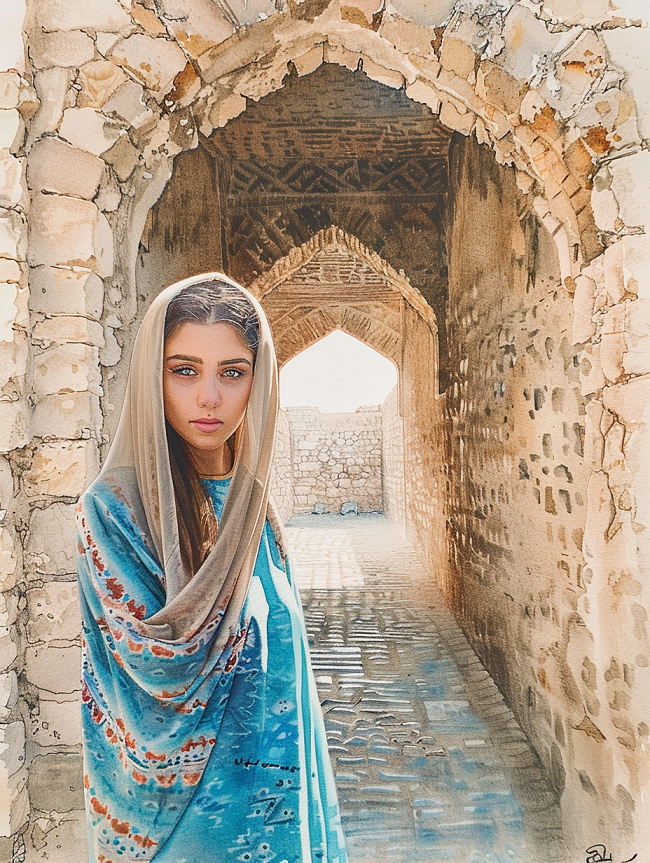Nestled in the heart of the Persian Gulf, the Kingdom of Bahrain stands as a testament to the rich tapestry of human civilization that has flourished on its shores. From the ancient Dilmun civilization, through the era of Islamic conquests, to the age of pearling that defined its economic landscape, Bahrain’s archaeological sites offer a window into the myriad cultures and epochs that have left their mark on this island nation. This essay delves into Bahrain’s premier archaeological sites, including the UNESCO-listed Qal’at al-Bahrain, the historical pearling trail of Muharraq, the expansive A’ali burial mounds, the enigmatic Barbar Temple, and the ancient Saar settlement, among others. Through these relics of the past, we embark on a journey to uncover the stories of ancient trade networks, religious rites, and daily life that have shaped Bahrain’s heritage.
Qal’at al-Bahrain (Bahrain Fort)
Qal’at al-Bahrain, often hailed as the jewel of Bahrain’s archaeological portfolio, serves as a palimpsest of the island’s bustling past. Initially established as the capital of the Dilmun civilization, a culture that thrived around 2300 BCE, the fort’s strategic location at the crossroads of ancient trade routes between the Indus Valley and Mesopotamia underscored its importance. Over the centuries, this site witnessed the ebb and flow of various powers, including the Greeks, Portuguese, and Persians, each leaving a layer of history etched into its walls.
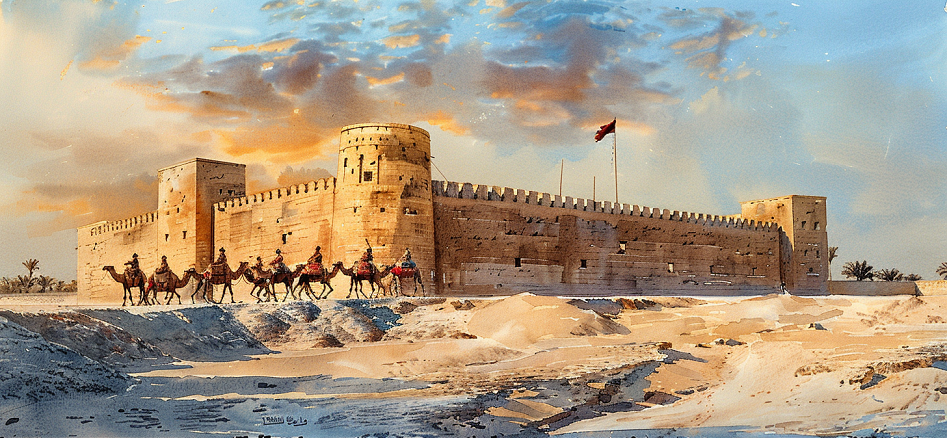
Architectural and Archaeological Highlights
The architectural grandeur of Qal’at al-Bahrain is a testament to the ingenuity of its builders. The site comprises an artificial hill created by successive layers of human occupation, topped by the fort itself, which dates back to the 6th century. Excavations have unearthed a treasure trove of artifacts, from Dilmun seals that hint at early administrative practices to Hellenistic pottery that speaks of a period of Greek influence. These findings not only illustrate the site’s significance in ancient trade networks but also offer insights into the daily lives of its inhabitants.
Significance and UNESCO Recognition
In 2005, UNESCO recognised Qal’at al-Bahrain as a World Heritage Site, a distinction that highlights its universal value as a cultural landmark. This recognition underscores the fort’s role in the understanding of urban development, trade, and civilisation in the Gulf region. The site’s complex stratigraphy provides a unique narrative of human settlement patterns, economic shifts, and the cultural amalgamation that characterised Bahrain’s history. Through its layered history, Qal’at al-Bahrain narrates a story of resilience, adaptation, and cultural exchange that is central to the identity of Bahrain.
Bahrain Pearling Trail
The Bahrain Pearling Trail represents a tangible link to the island’s pearling past, a trade that once formed the backbone of its economy. Situated in Muharraq, the trail weaves through the heart of Bahrain’s pearling history, encapsulating the essence of an industry that dominated the Gulf waters from the late 19th to the early 20th century. Pearling was not merely an economic activity but a way of life that shaped the social and cultural fabric of Bahraini society, with generations of Bahrainis venturing into the sea to extract pearls, a symbol of wealth and beauty.
Trail Features and Heritage Buildings
This UNESCO World Heritage site is an intricate lattice of 17 buildings, three oyster beds, part of the seashore, and the historic Qal’at Bu Mahir fort at the southern tip of Muharraq Island. Among the trail’s highlights is the Siyadi House, a magnificent example of Bahraini residential architecture, which belonged to a prominent pearling merchant. Each building and site along the trail tells a unique story of the pearling era, from the austere living conditions of the pearl divers to the opulent lifestyles of the merchants who amassed fortunes from the trade.
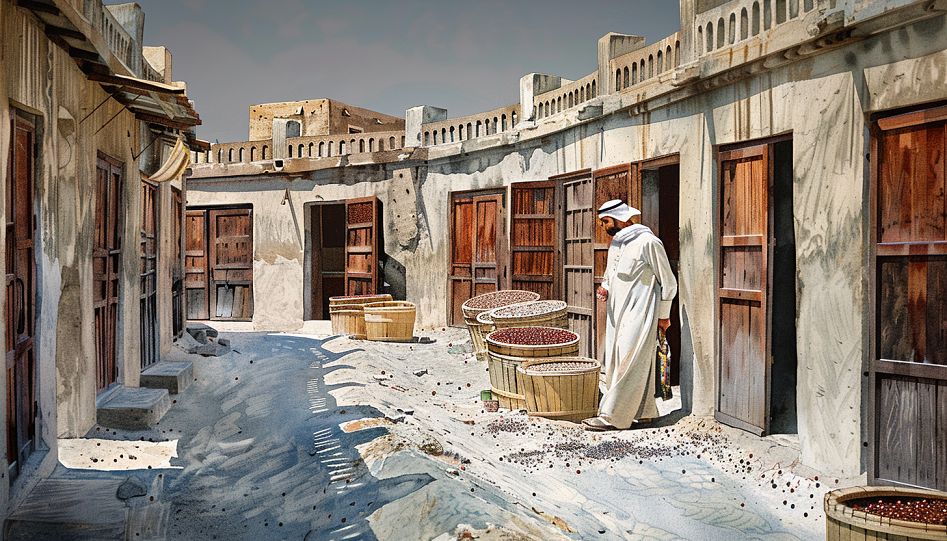
Cultural Impact and UNESCO Status
In 2012, the Bahrain Pearling Trail was inscribed as a UNESCO World Heritage site, a recognition that celebrates its profound significance in the cultural and historical narrative of Bahrain and the Gulf region. This acknowledgment not only honours the tangible heritage of the pearling industry but also preserves the intangible legacies of courage, resilience, and communal spirit that defined the pearl divers and their communities. The trail serves as a living museum, offering insights into the economic transformations wrought by pearling and its enduring influence on Bahraini identity and heritage.
A’ali Burial Mounds
The A’ali Burial Mounds, a sprawling necropolis in the heart of Bahrain, stand as a silent testament to the island’s ancient Dilmun civilization. These tumuli, numbering in the thousands, vary significantly in size and grandeur, reflecting a social stratification that distinguished between the resting places of royalty and commoners. The mounds, with their distinctive circular shapes and central stone chambers, are an archaeological hallmark of the Dilmun culture, offering a window into the burial customs and beliefs of a society that thrived over 4,000 years ago.
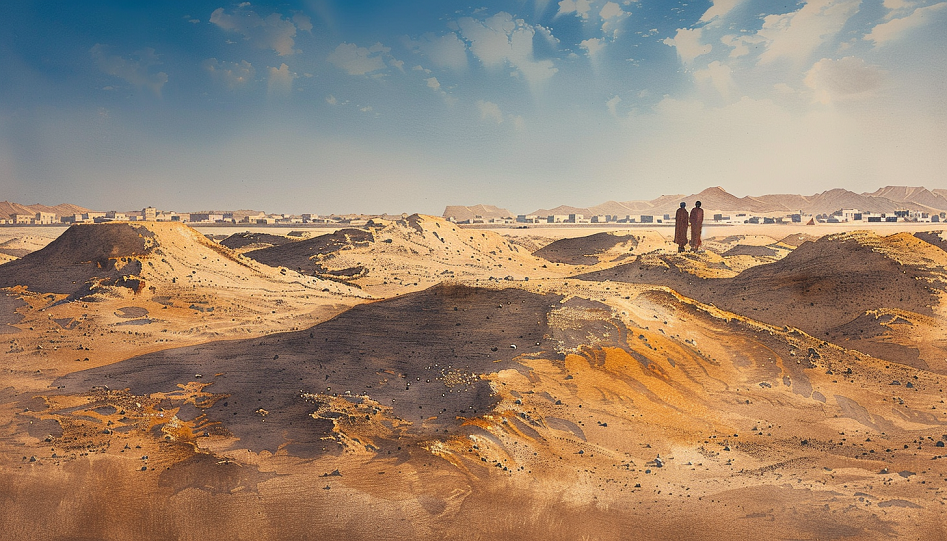
Connection to the Dilmun Civilization
The burial mounds are intrinsically linked to the Dilmun civilization, once a major trade and religious centre in the Gulf. The graves, often accompanied by offerings such as pottery, jewellery, and weapons, echo the Dilmunites’ beliefs in an afterlife and their reverence for the dead. The presence of grave goods, varying from simple earthenware to intricate gold ornaments, provides insights into the trade networks, craftsmanship, and socio-economic conditions of the period.
Archaeological Importance
The archaeological investigations of the A’ali burial mounds have yielded significant findings that have helped to reconstruct the life and times of the Dilmun civilization. Studies of the skeletal remains, alongside the artefacts found within the tombs, offer clues to the diet, health, and even the occupational hazards of the Dilmunite society. Moreover, the spatial distribution and architectural diversity of the mounds shed light on the evolving burial practices and religious beliefs of the ancient inhabitants, revealing a complex society that balanced both the demands of the living and the veneration of the dead. The preservation and study of these burial mounds continue to provide invaluable contributions to our understanding of ancient Gulf cultures and their place in the wider narrative of human history.
Barbar Temple
The Barbar Temple, nestled within the village of Barbar, Bahrain, is a remarkable relic of the Dilmun civilization, dating back to the third millennium BCE. Dedicated to Enki, the Sumerian god of wisdom and water, this temple complex comprises three successive layers of temples built atop one another over time. Enki’s worship at Barbar underscores the importance of water in Dilmun’s arid landscape, symbolizing life, fertility, and prosperity. The temple’s strategic location, near freshwater springs, further highlights the centrality of water in the religious and daily lives of the Dilmun people.
Architectural Details and Sacred Wells
The architectural sophistication of the Barbar Temple is evident in its design and construction, featuring a central courtyard, sacrificial altars, and a series of sacred wells. These wells, believed to be linked to the worship of Enki, provided a direct connection to the underground freshwater resources, a critical element in the temple’s religious functions. Artefacts discovered within the temple, such as inscribed seals and copper figurines, offer a glimpse into the rituals performed here, including offerings and water-related ceremonies that sought the deity’s favour for the community’s well-being.
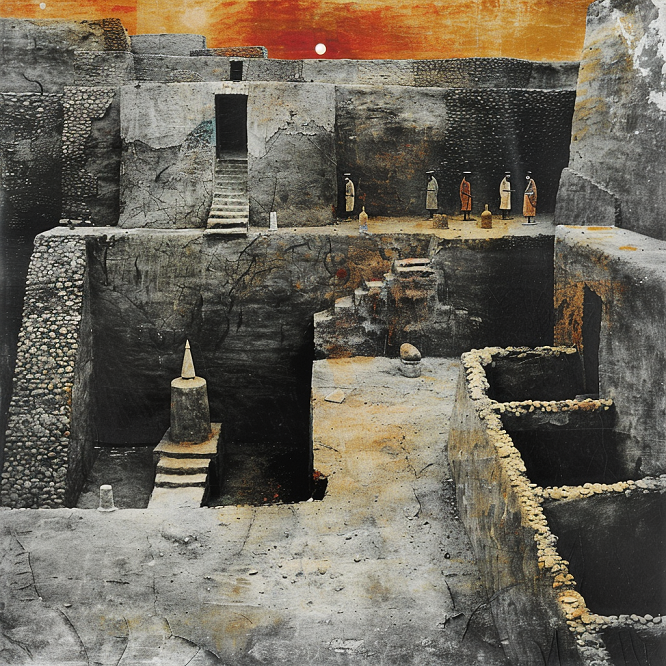
Significance in Dilmun Culture
The Barbar Temple’s significance extends beyond its architectural and religious functions; it serves as a key to understanding the spiritual life of the Dilmun civilization. The temple not only reflects the community’s reverence for Enki but also their sophisticated religious beliefs and practices. By examining the temple’s construction phases and the artefacts found within, archaeologists have gained insights into the evolution of religious practices in Dilmun, the role of water in their cosmology, and the temple’s role as a focal point for communal worship and social cohesion. The Barbar Temple, therefore, stands as a monument to the spiritual and technological advancements of ancient Dilmun, encapsulating the essence of a civilization that flourished amidst the challenges of its environment.
Saar Settlement
The Saar settlement, dating back to the early second millennium BCE, offers a vivid snapshot of daily life in the Dilmun civilization. This archaeological site, located on the western part of Bahrain Island, is characterised by its well-planned residential areas, public spaces, and a central temple complex. The layout of Saar, with its grid-like streets and carefully constructed houses, reflects a sophisticated level of urban planning and social organisation. Excavations have revealed houses equipped with domestic features such as hearths and wells, indicating a community that thrived on agriculture, craftsmanship, and trade.
Key Archaeological Discoveries
Archaeological excavations at Saar have unearthed a wealth of artefacts and structural remains that provide insights into the everyday lives of its inhabitants. Among the significant findings are pottery vessels, indicating local production and trade with neighbouring regions, and tools used in agriculture and craftwork. The discovery of seals and inscriptions points to administrative practices and the importance of trade and communication in Dilmun society. Additionally, the presence of religious figurines and artefacts within the settlement highlights the spiritual dimension of daily life and the centrality of the temple in the community.
Social and Religious Aspects
The Saar settlement’s architecture and artefacts shed light on the social hierarchy and religious practices of its residents. The central temple, dedicated to the worship of the gods and goddesses of the Dilmun pantheon, served as a communal focal point for religious ceremonies and festivals. The distribution of houses and the quality of grave goods found in burial sites within the settlement indicate a society with distinct social strata, yet one that was closely knit by shared religious beliefs and practices. Through the lens of the Saar settlement, we gain a deeper understanding of the Dilmun civilization’s social fabric, highlighting the interplay between the sacred and the secular in shaping community life.
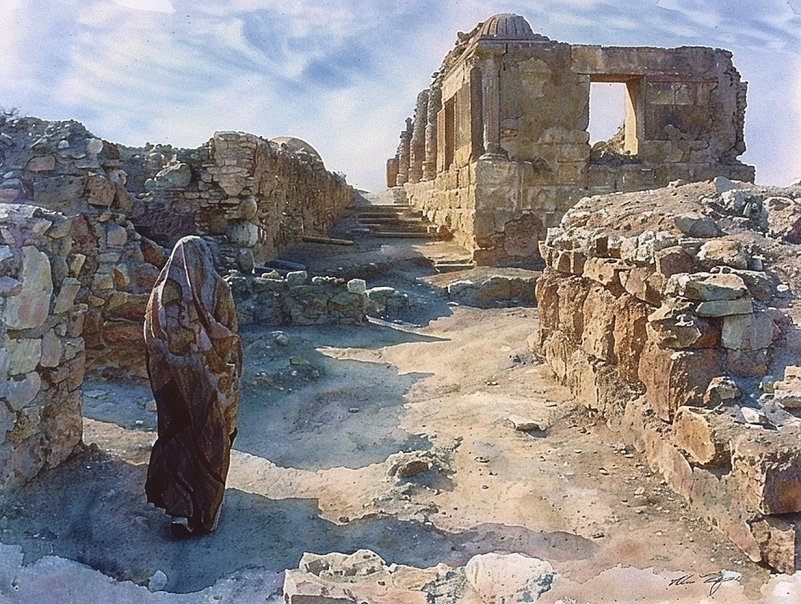
Conclusion
The exploration of Bahrain’s archaeological sites reveals a mosaic of human endeavour, spirituality, and social organisation that has flourished on this island nation over millennia. From the strategic urban complex of Qal’at al-Bahrain, the testament to the pearling industry along the Muharraq trail, the expansive necropolis of the A’ali burial mounds, the sacred precincts of the Barbar Temple, to the communal life encapsulated in the Saar settlement, each site offers unique insights into the diverse cultures that have called Bahrain home. These archaeological treasures not only enrich our understanding of Bahrain’s historical landscape but also underscore the importance of preserving such heritage for future generations. Through the lens of archaeology, we gain a profound appreciation for the resilience, innovation, and spirituality of the peoples of Bahrain, whose legacy continues to shape the cultural identity of this vibrant Gulf nation.

